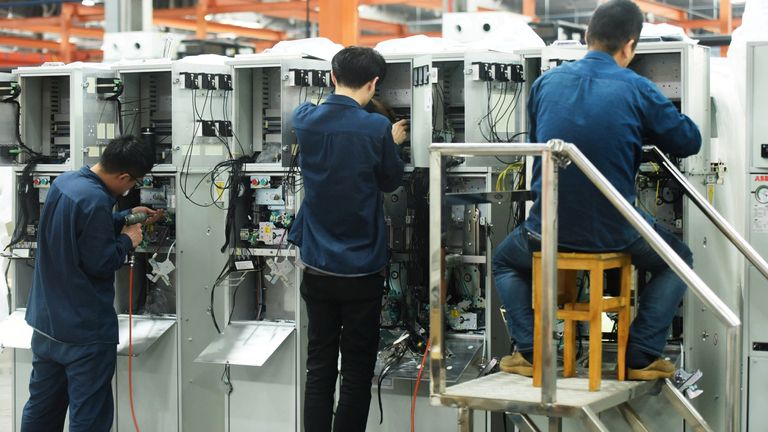China’s economic recovery accelerated in the third quarter as consumer spending picked up and factories rushed to meet global demand for medical equipment such as face masks, according to official figures.
The world’s second-largest economy suffered its worst quarterly fall in output since the 1960s between January and March as it became the first to reel from the effects of the COVID-19 crisis ahead of its global spread.
It has reported a modest recovery since as its economy reopened, with 3.2% growth on a year earlier reported in the following three months.
The National Bureau of Statistics (NBS) said on Monday that a figure of 4.9% was achieved in the third quarter running to the end of September – confirming a continuation of the ‘v-shaped’ recovery that has proved elusive in the UK and elsewhere.
That figure was slower than analysts had expected but they pointed to encouraging data in the final month of the period as giving good reason for optimism.
Retail sales grew by 3.3% in September from a year earlier, speeding up from a modest 0.5% rise in August, while car sales rose by almost 13% on the previous month.
Industrial output grew by 6.9% after a 5.6% rise in August.
It is hoped that a nascent economic recovery in China will help stoke the engine of growth elsewhere in the coming months.
But there is concern in Beijing that demand for Chinese goods overseas will remain shaky as the economic fallout from the pandemic continues to grip key markets, including Europe.
NBS spokesperson, Liu Aihua, said: “Right now the overseas epidemic situation is still severe.
“We are also faced with the instability and uncertainty of the international circumstances. The domestic effective demand is still insufficient.
“The recoveries of different industries and regions are still imbalanced. Much needs to be done to consolidate the base of a sustainable economic growth.”
China has held off on additional post-crisis stimulus to get the economy moving in recent months, for fear of adding to its huge debt mountain at a time of weaker demand.
The authorities have moved to create nine million jobs after more than 20 million factory workers were feared to have lost work in the wake of the virus shutdown.
Independent analysts estimated 130 million people were without work – at least temporarily – during the country’s lockdown.
Nevertheless, the International Monetary Fund has forecast growth of 1.9% in China over the full year.
China would be, under that scenario, the only major economy likely to record rising year-on-year output.




